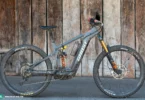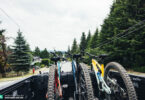What is the best kind of ebike for touring, getting around and everyday life? Salespeople in bike shops will often recommend trekking bikes but is that the best advice? We take a closer look at trekking ebike concepts and contemporary alternatives to find out which is the best choice for commuters, tourers and leisure riders.
The ebike industry is booming and ever more people are fascinated by the possibilities offered by electric motors. However, shopping for a new ebike will inevitably bring up questions that you may not have considered before. Most important of all, what kind of ebike do you need? Unless you’re new to cycling, you will be familiar with (e)MTBs and numerous other bicycle categories such as trekking, touring, cross or fitness ebikes. The intended uses of each can be vague and there tends to be some overlap. Rather than the seductive promises and marketing hype that brands tout to draw attention to themselves, what really counts is what’s best for you, the rider. The right ebike is about finding the best bike for you, your needs and your intended use. When it comes to trekking ebikes, often it won’t be the bike that dealers will suggest.
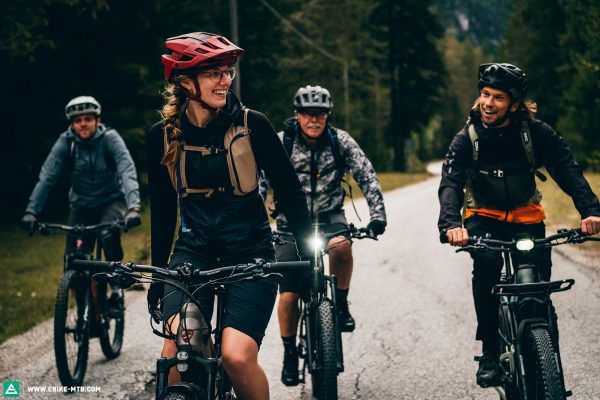

The bike market can be confusing and labyrinthine with its wealth of categories, especially for those who are new to the sport.
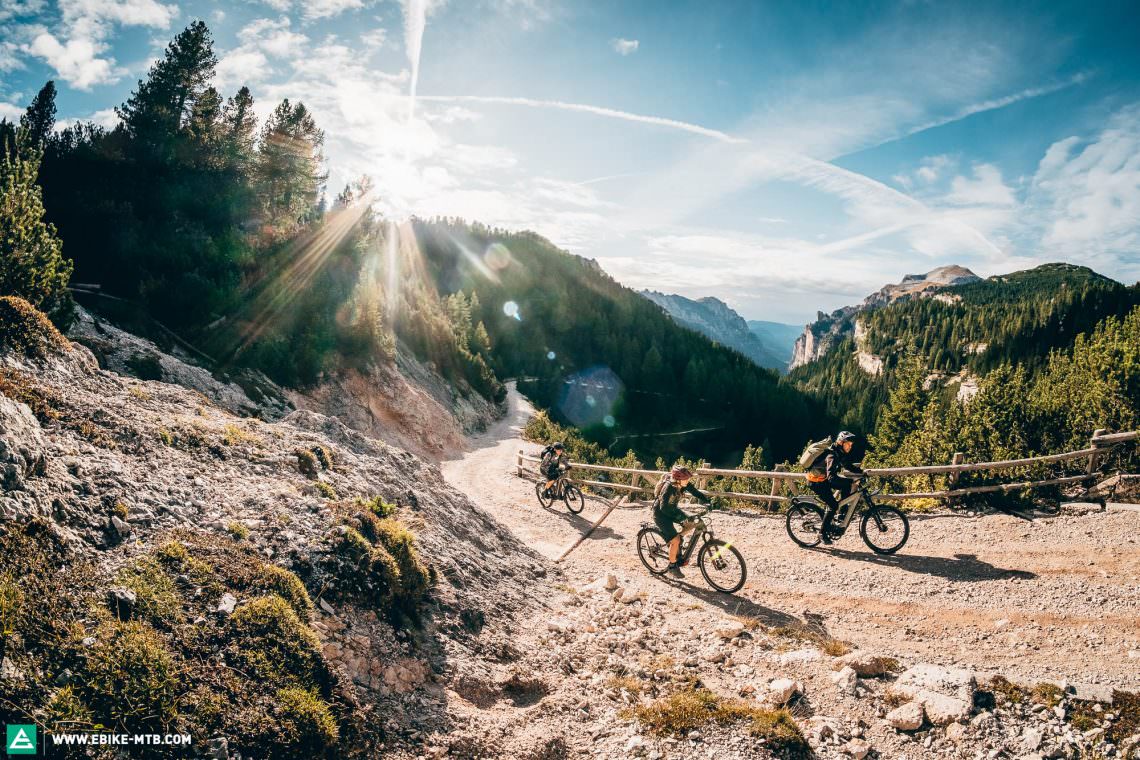
We receive lots of inquiries every day from readers seeking advice on what kind of ebike to buy. We’re not talking about experienced (E-)mountain bikers who regularly rock the trails and bike parks, discussing the latest suspension fork and shock technology over a post-ride beer. Most of them know what kind of bike they need, regularly referring to our group tests for details and suggestions regarding the latest components and best eMTBs. Most of the inquiries are from newcomers who typically commute, run errands or ride tours and are simply overwhelmed by the range of bikes, options and models available. This flood of options stands in stark contrast to buyers’ actual needs, who are usually looking for a single, versatile bike to fulfil a wide variety of purposes.
You want a bike to commute with, for weekend tours with luggage and leisurely cruises in the countryside. Can one bike do it all?
Most people know what they want to use their ebike for: occasional commuting, leisurely rides and weekend tours with luggage. Above all, it has to offer safe and easy handling. In most cases, salespeople will point their customers to a trekking bike, as they would have done twenty years ago. This approach is rooted in tradition, but does it still make sense today? What are the requirements for touring or trekking ebikes?
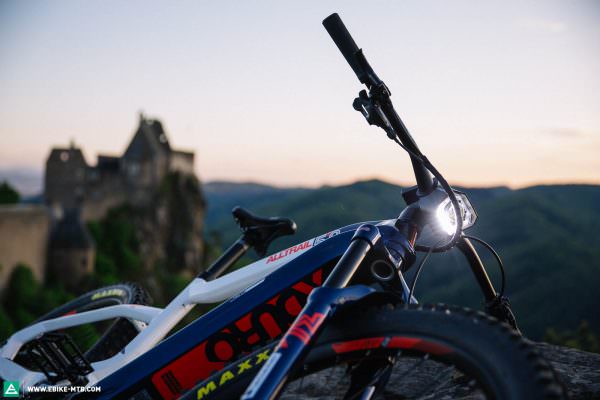
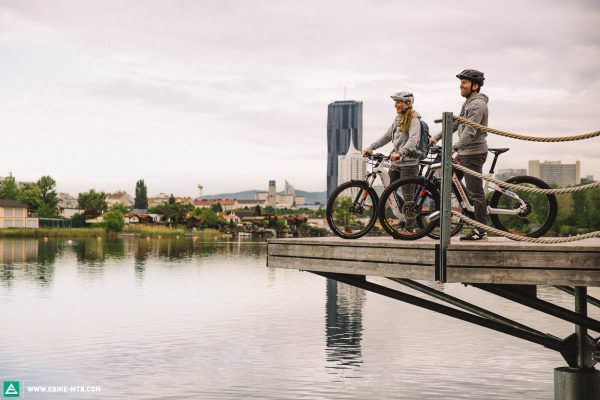
What is a trekking bike?
A trekking bike, also known as a hybrid, is a mixture of a city and mountain bike, capable of riding on a mixture of surfaces from the city and cycle paths to forest roads, equipped with all the accessories needed to make it roadworthy. In the past, this category of bicycles has often been the first choice for extended tours and bicycle trips thanks to their comfortable riding position and accessories such as racks for pannier bags.
Non-motorised trekking bikes are built to be durable, reliable and fast-rolling on flat terrain. They’re specced with skinny, semi-slick 700C tires and short-travel forks to significantly reduce rolling resistance compared to mountain bikes, making them quick and efficient on compacted surfaces. Today’s trekking ebikes are designed and built the same way. Touring, fitness, and hybrid bikes are all subcategories of the same style of bike. They’re similarly specced, though not always to the same extent. It has to be said that bicycle categorisation is often subjective and doesn’t permit clear definitions.
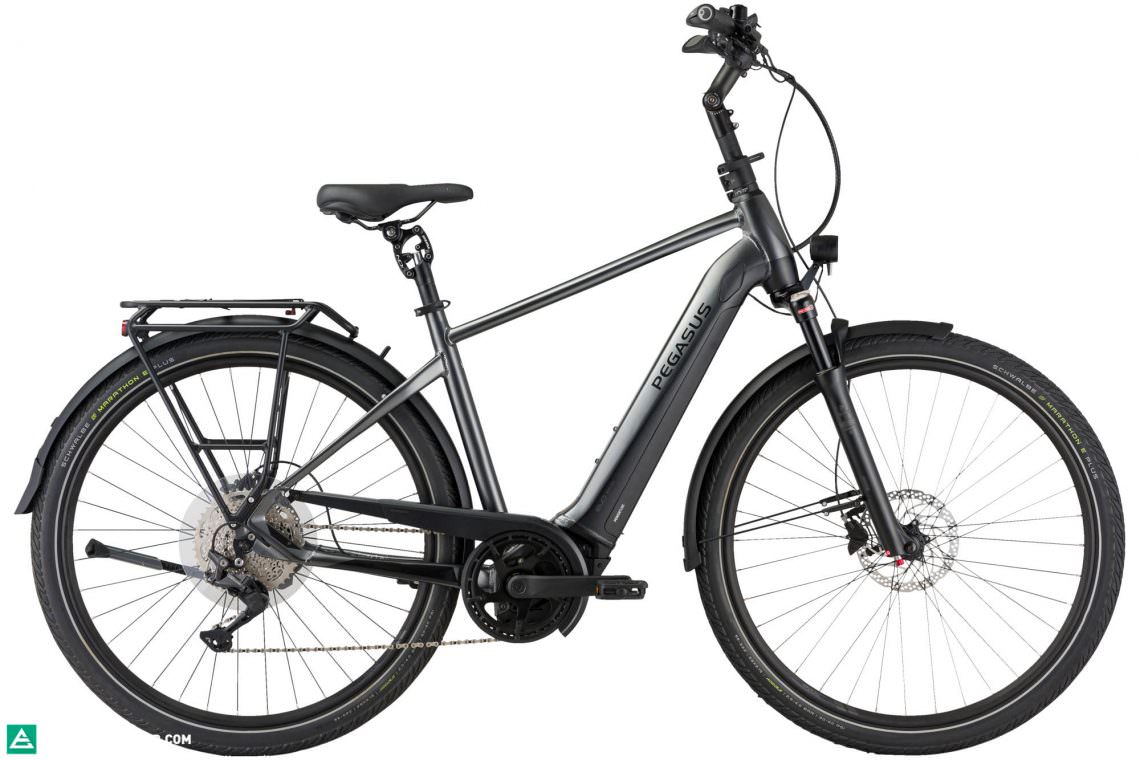
Bei nicht-motorisierten Trekking-Bikes standen die Haltbarkeit, Zuverlässigkeit und Leichtläufigkeit in der Ebene im Vordergrund – mit schmaleren Reifen und einer kurzhubigen Federgabel wollte man den Rollwiderstand im Vergleich zu Mountainbikes deutlich reduzieren, um leichter auf festen Wegen voranzukommen. Und genau so sind heutige Trekking-E-Bikes noch immer konzipiert: Nach wie vor sind sie meist mit einer kurzhubigen Federgabel und schmalen, halb profilierten 28”-Reifen ausgestattet. In Abwandlung dazu gibt es noch die Touren-, Fitness- und Cross-Bikes. Das sind ähnlich spezifizierte Bikes, teilweise jedoch ohne Vollausstattung. Bleibt noch anzumerken, dass die Abgrenzung der Kategorien voneinander oft sehr subjektiv ist und nicht wirklich trennscharf vorgenommen werden kann.
The missed opportunity of motorised trekking bikes
With the introduction of electric motors, the trekking bike concept has lost its relevance yet, unfortunately, has remained unquestioned! The additional weight of the battery and motor, together with the forces they introduce don’t play well with classic trekking bike design. The geometry must be adapted for more stable handling while components need to be more robust and capable. Transferring the requirements of a classic trekking bike to the world of ebikes requires an entirely new approach. Considerations of rolling resistance and the narrow tires that go with that are no longer relevant with a motor to propel you, opening up new possibilities. After all, the motor will support you up to 25 km/h, regardless of whether you’re on semi-slick or knobbly tires. Depending on the terrain, tire pressure and riding style, any losses in range are negligible.
Skinny tires might reduce rolling resistance but you’ll be wishing you had wider ones to roll over curbs, manhole covers, potholes or tram tracks. They can also be hazardous in off-road terrain. Compared to eMTBs, the typically inferior trekking bike components rob you of confidence and provide less margin for error. Trekking bike suspension forks can absorb shocks but rarely increase traction. As such, handling isn’t nearly as stable as it could be, which is what newcomers and older riders need most.

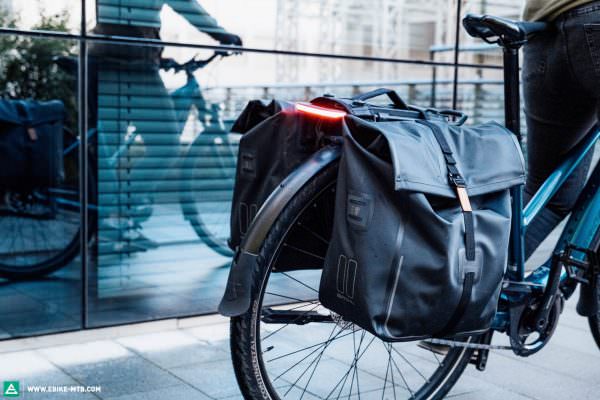
The typical design of today’s E-trekking bikes doesn’t offer any advantages. On the contrary, amounting to basically a traditional trekking bike with a motor bolted on, they don’t exploit the inherent potential that ebikes bring, curtailing it instead and leading to an important question:
We have to ask ourselves why trekking ebikes still exist
To be clear, we’re not against trekking bikes per se. Long excursions and bike adventures are a wonderful thing. We’re just asking ourselves if, as we move into a new era, trekking bikes are still the best tool for the job. With a 35.5% market share, the E-trekking bike category still makes up a considerable part of the German ebike market. Are people buying the wrong bikes or are today’s technological advancements simply misunderstood and inadequately communicated? Or do retailers and manufacturers push this category of bikes merely because they’re selling so well? Do E-trekking bikes have advantages over the latest generation of fully equipped eMTBs that we don’t know about? To answer the last question, we take a closer look at the technical details of E-trekking bikes and modern eMTBs below.
EMTB vs E-trekking bike: What are the advantages?
Accessories to make it roadworthy
You might think that E-trekking bikes are at an advantage in terms of roadworthiness and assume that most eMTBs lack required components, like lights, to be used safely on public roads. However, many brands have caught on to this and now offer eMTB builds with lights, mudguards, a stand, a bell and reflectors, making them ready to take on the urban jungle.
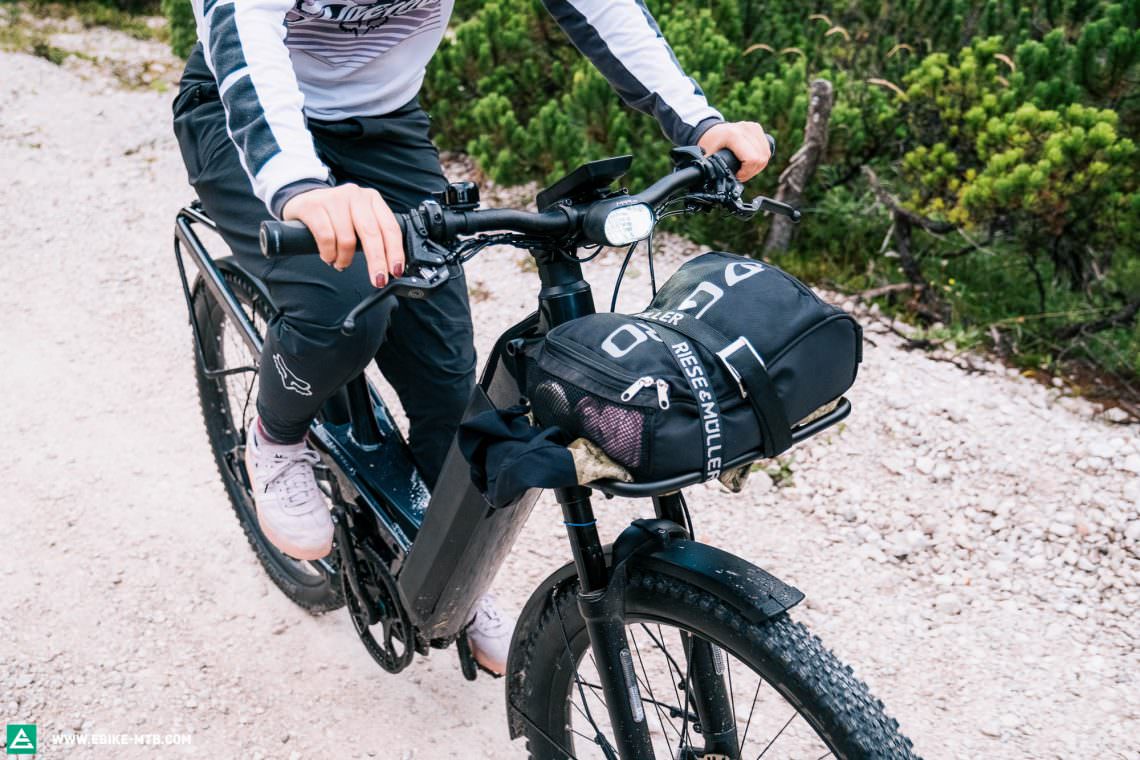
Handling & comfort of E-trekking bikes compared to eMTBs
The riding position on the latest generation of touring-oriented eMTBs is just as comfortable as E-trekking bikes. You can also adjust the riding position on an eMTB by way of the frame size and cockpit dimensions, sizing down for long-distance comfort. For those who want to feel safer when getting on and off the bike, off-road step-through bikes can be a comfortable and sensible alternative. Dropper posts are standard on eMTBs and a real game-changer in terms of rider confidence in off-road terrain but can also increase freedom of movement and allow you to get on and off more easily in urban environments. You’ll even find some models with integrated suspension. Additionally, eMTBs are designed and built to cope with heavier loads, offering significantly better suspension and brakes and making them much safer to ride. Most riders don’t want to ride anything else once they’ve experienced the levels of comfort and fun offered by a modern eMTB, even if, technically speaking, they don’t need an eMTB and only ride gravel or woodland paths.
What are the differences between the motors and range of E-trekking bikes and eMTBs?
It makes sense to choose an eMTB simply for the performance of the motor, with these setting the standard. Many eMTB motors can be adapted to suit your personal preferences via an app, so there aren’t any arguments to make against them. Smart, progressive support modes are just as suitable for relaxed cruising as they are for trail riding but you also get modes that are optimised for tours and increased ranges, such as Bosch’s aptly named Tour mode.
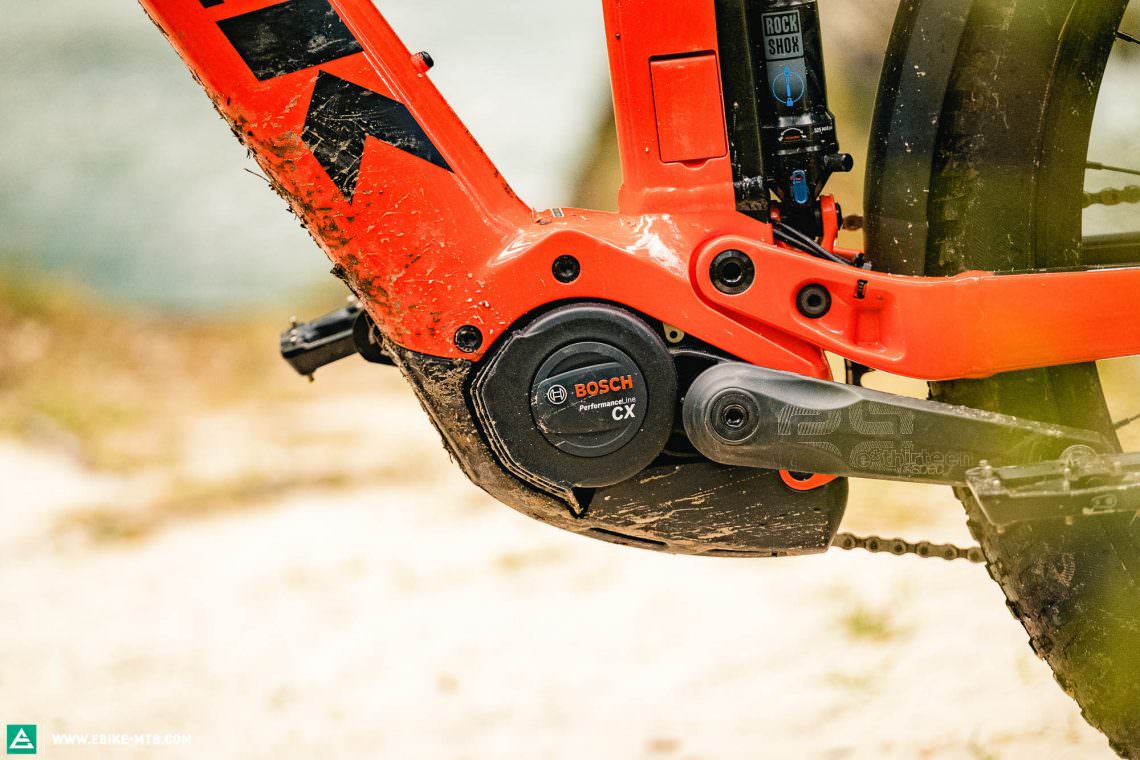
Style and design – Are E-trekking bikes sexy?
Though you might not like to admit it, if you spend that much money on a bike, you want something that isn’t only great to ride but good to look at too. Not even the oldest members of our editorial team (63) have ever heard anyone say, “Man, that’s a cool E-trekking bike.” On the other hand, we’ve often received compliments and admiring glances because of an eMTB. If you have a cool ebike, you’ll make many new acquaintances when you’re out riding and it’s a conversation starter.
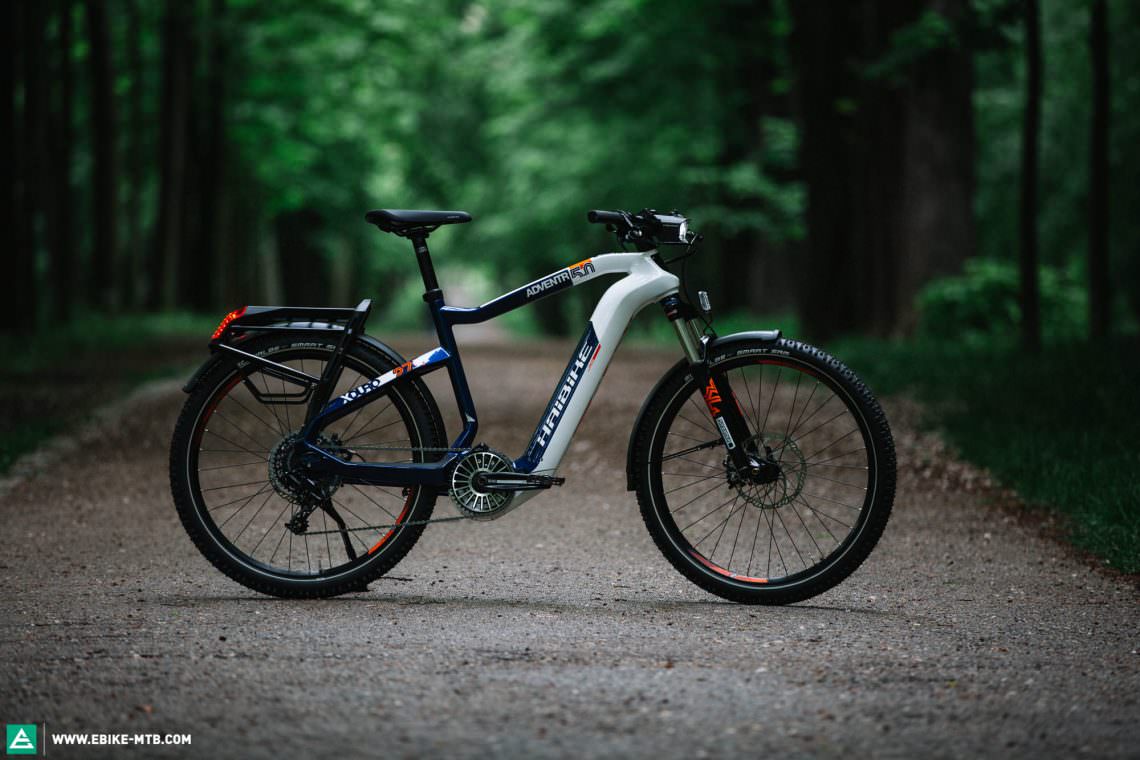
Not only are eMTBs the better E-trekking bikes, they’re capable of so much more!
Ebikes open up new possibilities and are hungry for adventure. You’ll likely come across new places and paths that you wouldn’t have otherwise, ending up on off-road terrain sooner than you think. That’s where the fun stops aboard a classic E-trekking bike as it isn’t made to go off-road. If you’re riding on an easy forest path, you’ll often find yourself wanting to take a shortcut, or might encounter roots, in which case you’ll feel a lot more comfortable on an eMTB. Why limit yourself with an E-trekking bike when you can have so much more fun and feel so much safer aboard the latest generation of fully kitted out eMTBs without having to make any compromises? After all, the newest eMTBs on the market are optimised for touring and everyday life, offering a relaxed riding position and good-natured handling.
We think it’s high time for the industry to question the status quo, especially in marketing and sales! E-trekking bikes aren’t just outdated from a technological point of view, they don’t offer any advantages over an eMTB either – except perhaps for a lower price point. Every day, every month and every year that this continues, an incredible number of people buy bikes that are still expensive, yet significantly worse and less versatile than what the market has to offer!

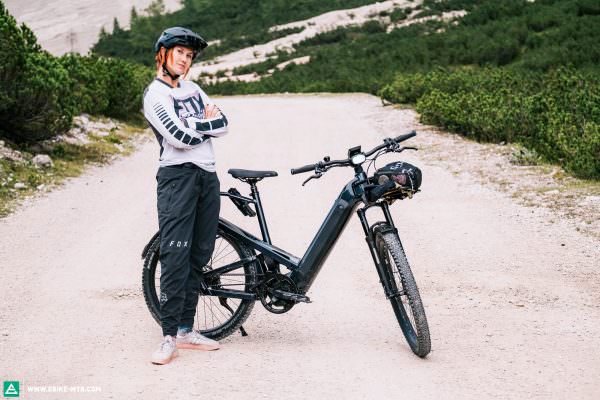
E-gravel bikes can also make for an exciting alternative. They’re a lot better looking, lighter and they’ve even become more comfortable than E-trekking bikes. The gravel trend is particularly appealing to the more competitive and adventurous among us who are drawn to the lure of bikepacking and want a bike with stable handling that is equally fast on- and off-road.
Conclusion
The truth hurts: motors have made trekking bikes largely irrelevant. Aside from the price, they offer no advantages over a fully equipped eMTB. Whether it’s commuting, having fun off-road, being comfortable on long tours, safety, lights or hauling your luggage, current eMTBs can tick all these boxes and look good doing so. Bye-bye (E-)trekking bikes! You simply can’t keep up with the times.
Recommended models
Our considerations aren’t just theory but based on real-world experience. There are some promising eMTBs currently on the market that are perfect for trekking, even receiving the prestigious 2021 Design & Innovation Award 2021 for it. While they’re capable of going off-road, they’re not made just for trails. Instead, the riding position, kinematics, suspension, geometry and comfort level are optimised for trekking too. In a groundbreaking group test, we compared 8 modern and promising touring e-bikes to find the best trekking ebike of 2021. Click here for the article!

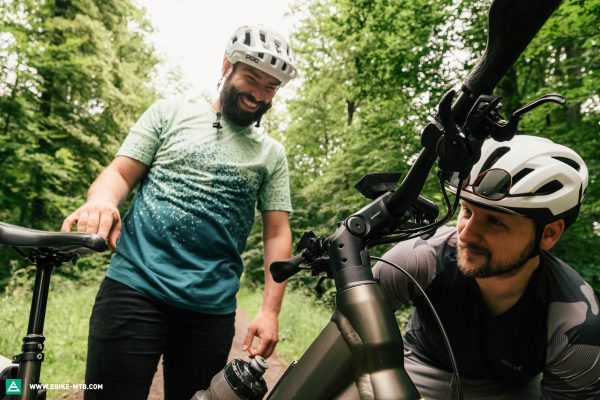

Did you enjoy this article? If so, we would be stoked if you decide to support us with a monthly contribution. By becoming a supporter of E-MOUNTAINBIKE, you will help secure a sustainable future for high-quality cycling journalism. Click here to learn more.
Words: Susanne Feddersen, Robin Schmitt, Jonas Müssig, Rudolf Fischer Photos: Robin Schmitt, Jonas Müssig, Manufacturer




